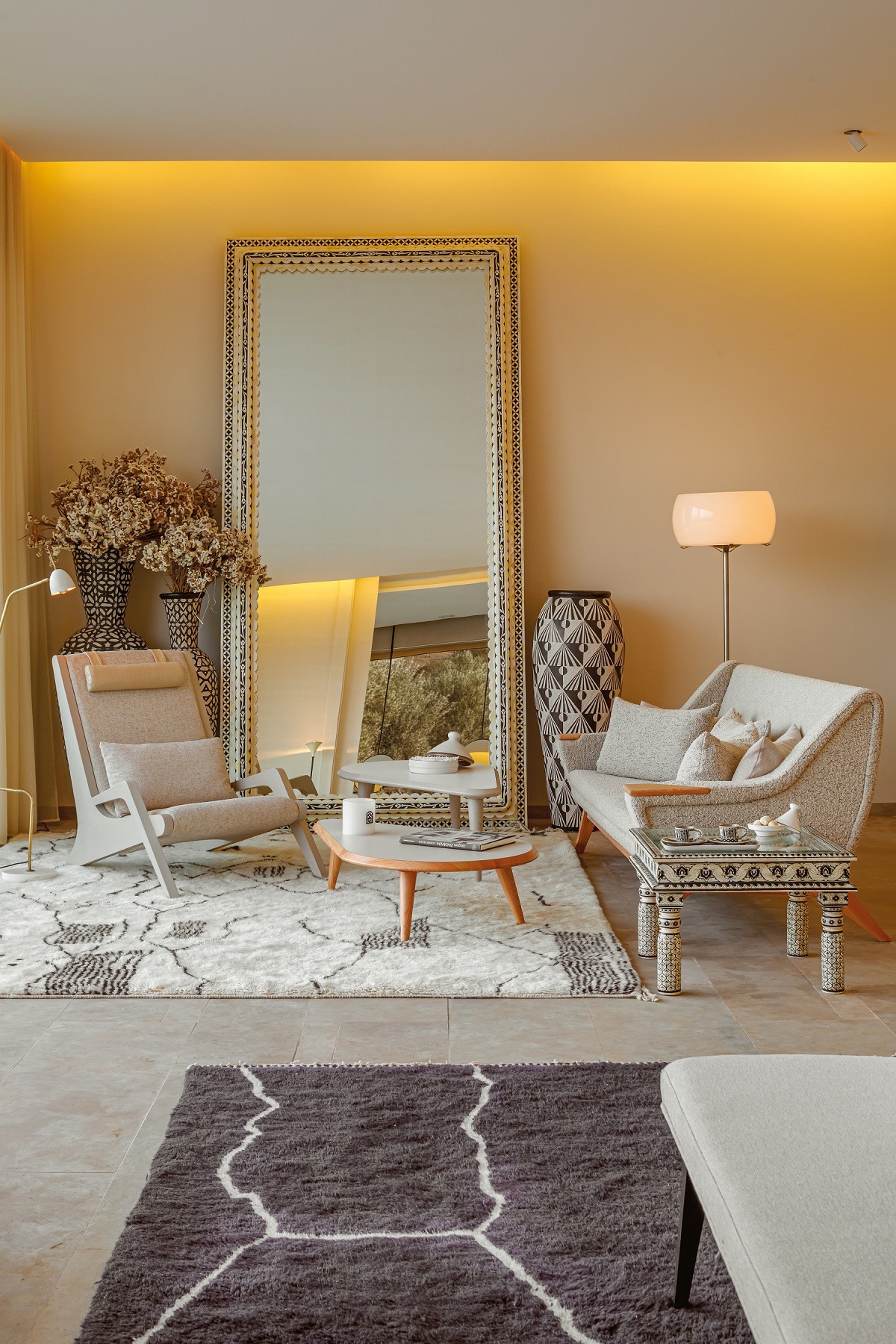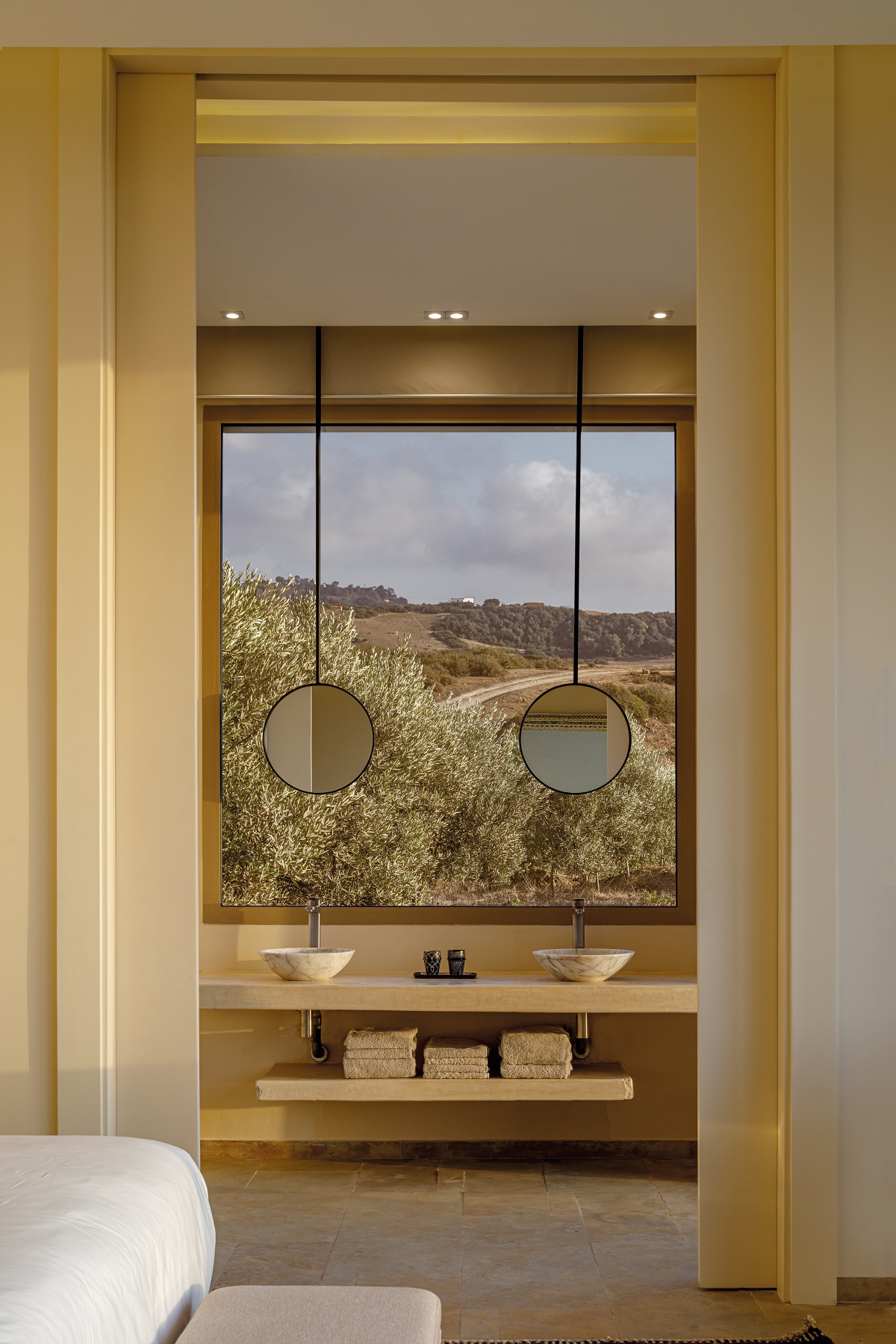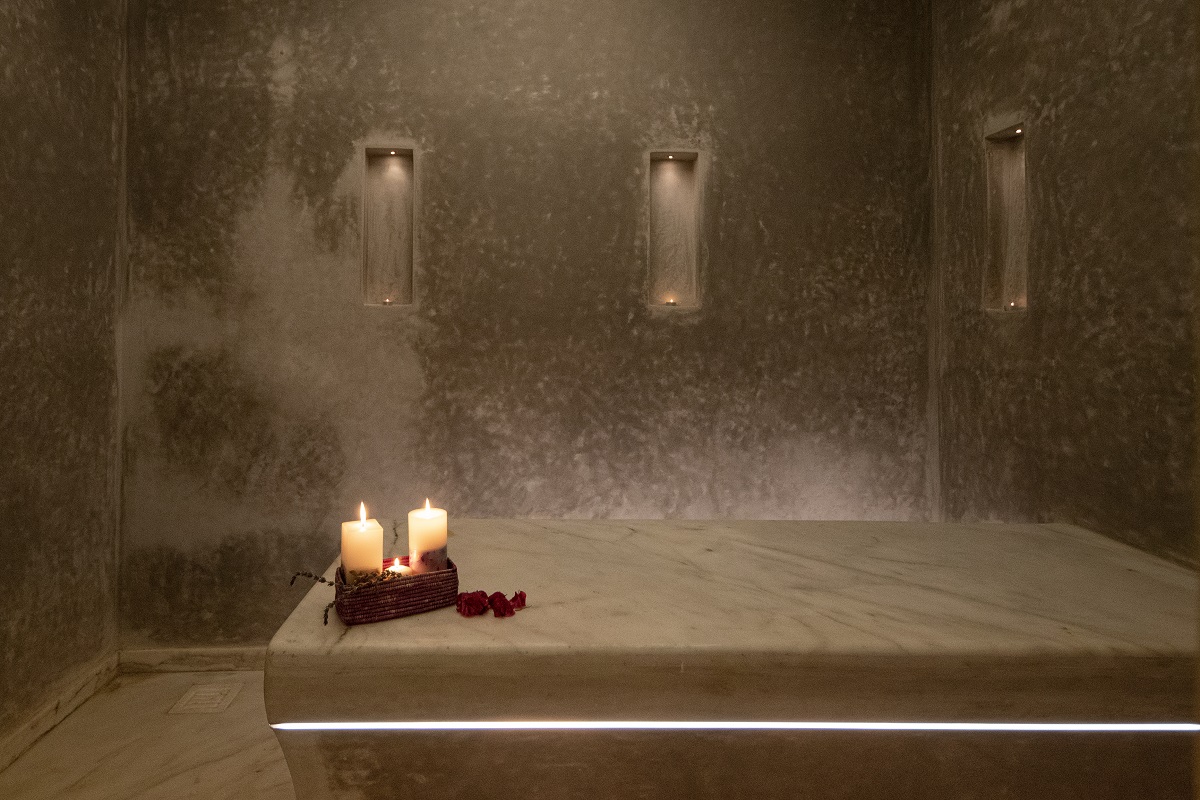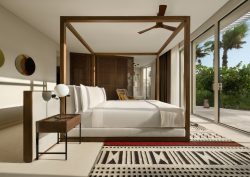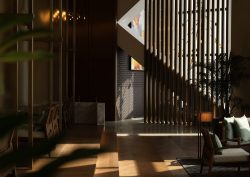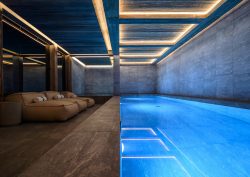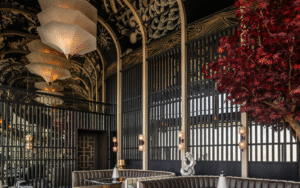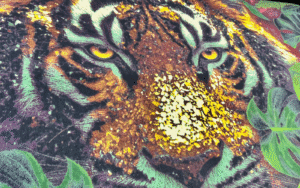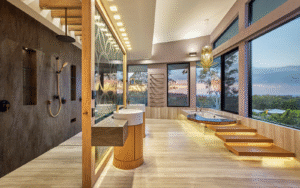La Fiermontina Ocean is the third chapter in the La Fiermontina Collection story – a tale that feels like one of those beautiful coffee table tomes whose pages you want to keep on revisiting. Pauline Brettell checks in to discover that the hotel is as much about design as it is about content, with a family history linking those pages that take you from Italy, France and now to the northern shores of Morocco…

The La Fiermontina Family Collection has been practicing the art of quiet luxury since its inception. Under the hands-on guidance of brother and sister Antonia and Giacomo Fiermonte, along with the design team of Charles-Philippe Mommeja and Christophe Vialleton from Laboratoire Design, Rabat, each property immerses itself in its location and invites its guests to do the same.
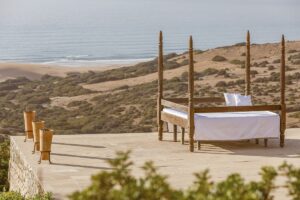
Image credit: La Fiermontina Ocean
With the location in many ways being the hero of this property, La Fiermontina Ocean has settled seamlessly into the northern Moroccan landscape. While the renaissance of Tangier might be grabbing the headlines, those in-the-know are discovering the quieter luxury beyond the city limits.
Located approximately an hour from Tangier, and a mere stones throw away from the fishing Port of Larache, this eco-retreat is centered in a protected natural park, surrounded by sand dunes, olive groves and the ultimate luxury of space and solitude. The property shelters 11 Pool Suites, two Pool Villas and four Traditional Stone Houses in the rural village of Dchier, which has been incorporated into the fabric of the hotel on several levels. In addition to the accommodation, La Fiermonte Ocean offers a beautifully designed hammam, private beach club and a restaurant championing its Italian roots alongside its Moroccan location.
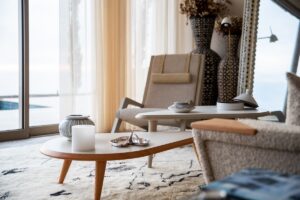
Image credit: La Fiermontina Ocean
Shifting comfortably between tagines and tiramisu – and both where delicious, I might add – La Fiermontina Ocean is a built reflection of its owners roots. The Italian heritage is clear in the details, while the Moroccan roots shine through in a manner that avoids all clichés. The design brief was based on a desire to show Morocco today, a contemporary view set against the backdrop of family history that combines three cultures: Moroccan, Italian and French. With the Moroccan-based design team having already worked on the other Fiermontina properties in Lecce and Paris, those links were easy to weave into the story.
“We have chosen not to exploit the usual Moroccan codes and to present Moroccan art in an isolated way, to enhance it more,” commented Mommeja and Vialleton, Laboratoire Design.
But lets start at the beginning – the location. As you drive over a bumpy, dusty road flanked by cork trees and pass by a small roadside stall selling sunshine yellow melons, there is a moment when you wonder if you have taken a wrong turning. However, as you arrive at the gates and are greeted by the view across the fields and dunes to where the ocean meets the sky, everything falls into place. And it is always about the view, no matter where you are on the property.
The hotel accommodation is made up of a series of small stone villas, each facing the horizon and are settled into the landscape in such a way that each occupies its own space and feels like a private haven. It literally feels like its just you, that view, all accompanied by the quintessentially summer sound of the cicadas.
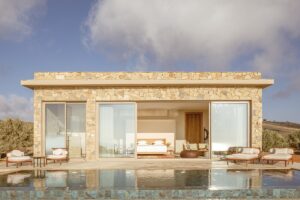
Image credit: La Fiermontina Ocean
“We have designed the location of the villas according to the configuration of the land,” explained Laboratoire Design, “with a concern for the preservation of privacy and distance between each villa.”
Throughout the property, the architecture clearly references the local environment and materials. In the village and hamman this is more obvious, but it is a clear thread that runs throughout all the elements. The apparent simplicity of the design has been anchored by attention to detail. The standout element in each villa is how it has been integrated into its location and boundaries are not only blurred, but in some cases can be completely removed at a switch of a button or a turn on a well designed hinge.

Image credit: La Fiermontina Ocean
The juxtapostion of contemporary Italian design and traditional Moroccan elements runs through the project – the statement detail being the collection of mid-century European lighting that catches the eye on every occasion, often underscored by the bold tribal designs that are typical of Moroccan carpets from the Atlas Mountains. These strong graphic statements of the traditional woven textiles underpin some of the more playful elements of contemporary design.
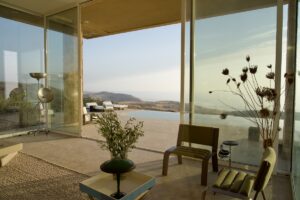
Image credit: La Fiermontina Ocean
You cannot discuss La Fiermontina Ocean without including the ethos at the core of the property – a sustainable tourism that both respects the region it is based in and is determined to enrich it, both economically and culturally. There is a strong sense of community as your wind your way through the various corners of the resort, which runs a lot deeper than your usual farm-to-table offering. The local community have been part of the process, from the preservation of the dunes, to offering viable alternatives to people in the surrounding villages, which are typically lacking in resources and at risk of being abandoned due to migration to urban settlements.
“La Fiermontina has put the Human Being at the centre of its project,” explained Antonia Fiermonte, who is also President of Fondation Orient-Occident. “Through our involvement in the community’s development, we have made it possible for the local villagers to remain in the land of their ancestors and lead a dignified existence.”
The collaboration between La Fiermontina Ocean and Fondation Orient-Occident has resulted in a holistic approach that is all about fostering a tourism economy firmly grounded in social solidarity.
This relationship is most visible in the village side of the property where the hammam and spa is located, alongside a cluster of more traditional cottage accommodation that overlook cultivated fields rather than the sweeping vistas of the Atlantic and where donkeys are king of the road.
Immersive and experiential tourism is nothing new to the Fiermontina brand, as it has been high on the agenda since its inception, from food experiences in Lecce, to art galleries in Paris and now includes the village of Dchier in its portfolio, where I was able to enjoy a traditional Moroccan breakfast in the courtyard of a village house with bread freshly brought to the table hot out of the clay oven.
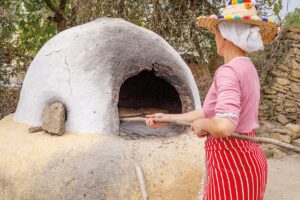
Image credit: La Fiermontina Ocean
It does feel like time, quite literally, slows down at La Fiermontina – possibly the ultimate luxury a hotel can offer its guest. The undeniable, yet understated, luxury allows you to detach and listen to incredible silence of nature that the privacy of the design allows. This resort really is all about digging into a new luxury that is being defined in the hospitality arena – the indulgence of time and of space, the appreciation of considered design, coupled with expectations of sustainability and all with community at the heart of it, ensuring that luxury isn’t simply about indulgence, but is also about connection.
“We believe that Morocco has always had the magnetic power to inspire magic,” stated Giacomo and Antonia Fiermonte. “At La Fiermontina Ocean we want to tell of this magic, of a place which transforms those who touch the Dune of the Sahel with their fingers.”
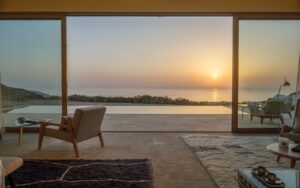
Image credit: La Fiermontina Ocean
My day ended with a quiet, sustainably driven electric buggy taking me (slowly) through the reserve to the edge of the ocean. Having clambered down the last dune, we arrived at the beach club, which, like everything at La Fiermontina, is inspired by local vernacular architecture and is easily integrated into the sand and the sea.
Put the fluffy white towel and a personal hamper aside, the luxury of a wild beach with simply sand and seagulls as far as they eye could see, took me back to childhood holidays on a windswept beach on the southern edge of the same continent. Finding myself in a moment of solitude on the northern edge was an emotionally charged, deeply personal moment in time for me – and isn’t that what real luxury is all about?
Main image credit: La Fiermontina Ocean




